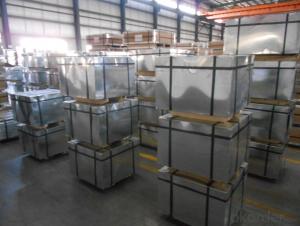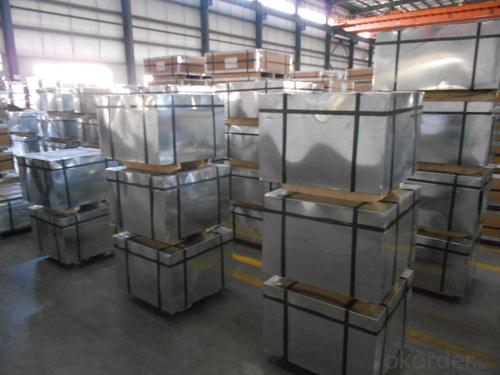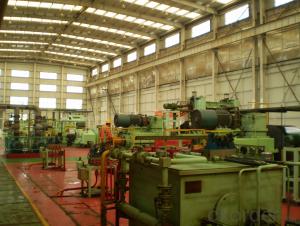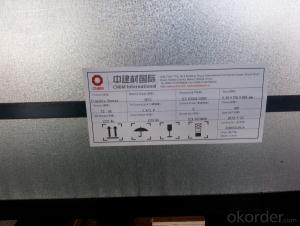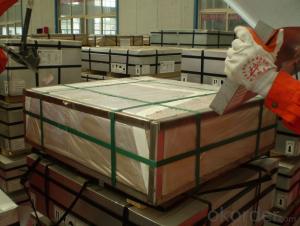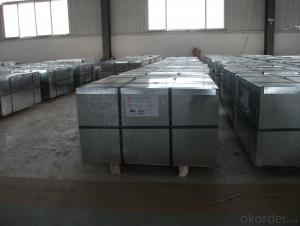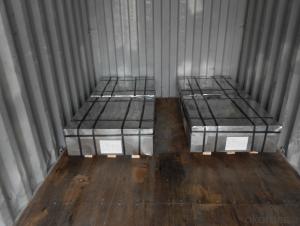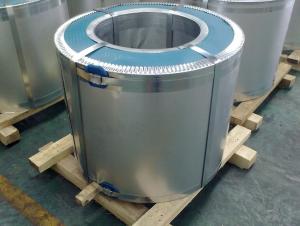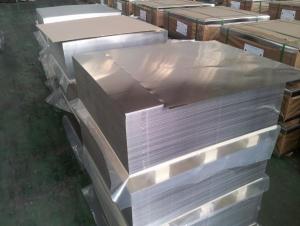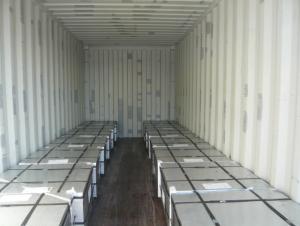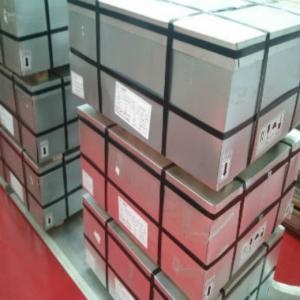Prime or Secondary Tinplate
- Loading Port:
- China Main Port
- Payment Terms:
- TT OR LC
- Min Order Qty:
- -
- Supply Capability:
- -
OKorder Service Pledge
OKorder Financial Service
You Might Also Like
Our Tinplates Specification:
Standard: ISO 11949 -1995, GB/T2520-2000,JIS G3303,ASTM A623, BS EN 10202
Material: MR,SPCC
Thickness:0.15mm - 0.50mm
Width: 600mm -1150mm
Temper: T1-T5; DR8 - DR10;
Annealing: BA & CA
Passivation:311
Oil: DOS
Surface: Finish,bright,stone,matte,silver
Packing:
1、For sheets: plastic or waterproof paper, metallic cover and angles, steel strips,wooden pallet.
2、For Coils: plastic or waterproof paper,plastic protect plate,steel strips.
Coil Inner Diameter: 508mm
Weight: 6-10 tons/coil
Application: widely used in every kinds of packing cans,such as tea packaging cans, painting packaging cans, chemical packaging cans and dry food packaging cans; and also mechanical parts
Both Prime and Second Quality Are Available!!!
- Q: How does tinplate contribute to the containment of chemical substances?
- Tinplate contributes to the containment of chemical substances by providing a protective barrier against corrosion and contamination. It is a durable and impermeable material that prevents the interaction between the chemical substances and the surrounding environment, ensuring their integrity and safety.
- Q: Can tinplate be used for packaging personal hygiene products?
- Yes, tinplate can be used for packaging personal hygiene products. Tinplate is a commonly used material for packaging due to its durability, corrosion resistance, and ability to maintain the quality and freshness of the products it contains. It is commonly used for packaging items like aerosol cans, deodorants, shaving creams, and other personal hygiene products.
- Q: What are the common uses of tinplate?
- Tinplate is commonly used in the packaging industry for making cans, containers, and lids for food and beverages. It is also used in the production of aerosol cans, paint cans, and metal closures. Additionally, tinplate is used for making various household items such as kitchen utensils, storage boxes, and tin toys.
- Q: What are the common printing techniques for tinplate?
- The common printing techniques for tinplate include lithography, offset printing, and silk-screen printing.
- Q: What are the weight advantages of using tinplate?
- Tinplate offers several weight advantages compared to other packaging materials. Firstly, it is significantly lighter than materials like glass or aluminum, making it easier to handle and transport. This lightweight nature also contributes to lower shipping costs. Additionally, tinplate's lightness allows for more product to be packaged in a smaller space, maximizing efficiency and reducing storage requirements. Overall, the weight advantages of tinplate make it a preferred choice for many industries seeking cost-effective and efficient packaging solutions.
- Q: What are the different printing techniques used on tinplate?
- There are several different printing techniques used on tinplate, including lithography, screen printing, and offset printing. Lithography involves creating an image on a flat surface, such as a metal plate, and then transferring that image onto the tinplate. Screen printing involves using a mesh screen to apply ink onto the tinplate in a desired pattern or design. Offset printing involves transferring an image from a plate onto a rubber blanket, and then onto the tinplate. Each technique has its own advantages and is chosen based on factors such as cost, complexity of the design, and desired quality of the print.
- Q: Can tinplate be used for jewelry and accessories?
- Yes, tinplate can be used for jewelry and accessories. Tinplate is a versatile material that can be easily shaped, engraved, and decorated, making it suitable for creating various types of jewelry and accessories. It is durable, lightweight, and has a metallic appearance, making it an attractive choice for designers and consumers alike. Additionally, tinplate is affordable and readily available, making it a viable option for jewelry and accessory manufacturers.
- Q: What are the main challenges in recycling tinplate?
- The main challenges in recycling tinplate include separating tinplate from other materials, such as paper or plastic coatings, as well as removing any remaining food or product residues. Additionally, the tin coating on tinplate can pose challenges during the recycling process, as it needs to be separated and recovered for reuse. Finally, ensuring a consistent supply of tinplate for recycling can be a challenge due to fluctuations in consumer demand and collection efforts.
- Q: What are the limitations of using tinplate?
- There are several limitations to using tinplate. Firstly, it is relatively expensive compared to other packaging materials such as aluminum or plastic. Secondly, tinplate is not as lightweight as some alternative materials, which can add to transportation costs and increase carbon footprint. Additionally, tinplate is susceptible to corrosion and can rust if not properly coated or maintained. Lastly, its use is limited to certain applications, and it may not be suitable for products that require high heat or pressure resistance.
- Q: How does tinplate affect the overall branding of products?
- Tinplate plays a significant role in shaping the overall branding of products. Its unique properties, such as durability, versatility, and high-quality appearance, contribute to creating a positive perception of the brand. Tinplate packaging enhances the visual appeal, protects the product from external factors, and provides a premium feel, which can ultimately elevate the brand image and consumer preference.
Send your message to us
Prime or Secondary Tinplate
- Loading Port:
- China Main Port
- Payment Terms:
- TT OR LC
- Min Order Qty:
- -
- Supply Capability:
- -
OKorder Service Pledge
OKorder Financial Service
Similar products
Hot products
Hot Searches
Related keywords
